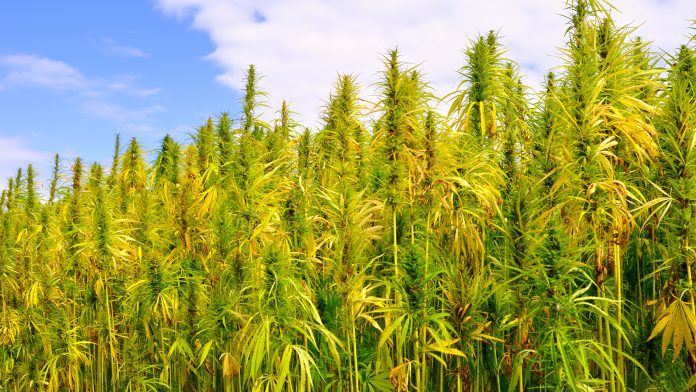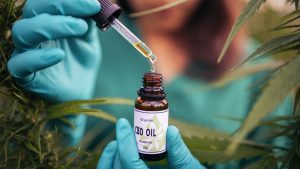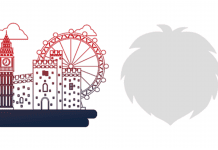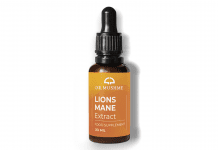
Lorenza Romanese, Managing Director of the European Industrial Hemp Association discusses the state of hemp production in Europe as well as the environmental and economic benefits of the hemp plant.
Hemp plant farming can provide many positive impacts for both the environment and the economy. Hemp perfectly fits sustainable agricultural practices, it can provide diversified output markets for farmers, and it can boost the development of green bio-based industry in rural areas. In addition to these economic and environmental benefits, Lorenza Romanese, Managing Director of the European Industrial Hemp Association (EIHA) illuminates several other advantages, furthering our understanding of the hemp plant, its properties and how it can truly be a credit to Europe’s agricultural sector.
The EIHA defines hemp as ‘a Cannabis sativa L. plant – or any part of the plant – in which the concentration of tetrahydrocannabinol (THC) is below the regulated maximum level.’ Thus, while illegal substances such as recreational cannabis, usually referred to as marijuana, has THC levels of up to 20%, hemp’s concentration of this substance is much lower, at 0.3% to 1%. Lorenza Romanese discusses this misconception and explains why hemp is a product that does not need to be under constant scrutiny.
How did the European Industrial Hemp Association (EIHA) come to be founded and what role does the organisation play within Europe’s industrial hemp sector?
The European Industrial Hemp Association was founded 25 years ago, in Germany. The four founders, who were all working with hemp fibres at the time, could be considered visionaries given the lack of hemp-based products on the market at the time. The EIHA has grown a lot since then and now boasts over 250 members across 25 EU states and 12 other countries. We have offices in Brussels and Düsseldorf which act as key trade body representatives, helping to navigate the complex political and regulatory landscape within Europe. EIHA’s lobbying team works in Brussels to defend the interests of key stakeholders within the hemp industry including hemp producers and traders.
Looking at the industry now, CBD is a booming sector and if you compare the state of industrial hemp plant with all other agricultural sectors in Europe, it has by far seen the greatest growth in recent years. Yet, the scale of hemp cultivation is still small in comparison to other crops grown in Europe, with only 50,000 dedicated hectares. France, Italy, and the Netherlands are the largest producers in Europe at present. Hemp plant production has the ability to expand very rapidly in Europe because the crop is fast-growing and boasts many benefits compared to other crops.
What are the economic and environmental benefits of cultivating hemp plant?
Looking at the economic side, today’s European farming sector is not in good shape and many agricultural productions, that were constantly expanding in the past, are now seeing a sudden decrease. Today, the hemp plant is an opportunity for farmers to earn additional income and diversify their output markets. Cultivating just one hectare of hemp for fibres can earn you €800, and if you incorporate grains and seeds that can be found in the upper part of the plant, the yield per hectare could then be worth up to €1,200. Extracts from the leaves and flowers can be used in food preparation, such as for making pasta or flour. If we could access the third component of the upper part of the plant, where we find CBD, the yield could be worth up to €3,500.
Cultivating hemp provides many advantages for the green economy. In addition to its positive environmental credentials, hemp fibres need to be processed very quickly after they have been cut and therefore require a short value chain. A short value chain could provide industry in more rural areas and therefore facilitate jobs for skilled people in those areas. However, important investments are needed to scale up hemp plant stalks transformation and a clear shift in the manufacturing industry towards bio-based sources. Making the decision to grow locally means that hemp could, for the first time, generate a ‘green renaissance’ for rural areas.
Hemp plant has a very low environmental impact and is susceptible to few pests and diseases which, in turn, means very few, if any, chemical treatments are needed during cultivation. Hemp’s dense leaves help to keep the soil below moist and provide nutrition when these leaves are shed. Similarly, the roots run deep so they can capture and store CO2, thus making hemp a carbon-negative material. The plant has wonderful potential for absorbing heavy metals and pesticides from the soil and for that reason, it is used as a phytoremediation crop to clean up land that cannot be used for agricultural purposes.
Agricultural waste is a key challenge today, hemp can mitigate this as each part of the plant can be used. The roots can be used in cosmetics, stalks can be used for long fibres in textiles, or as short fibres for paper, bio-composite and non-woven, and shives can be used in construction materials. The upper part of the hemp plant, where you find the seeds and flowers, can be used in food production, food supplements as well as in cosmetics. It is a very good tool for fighting fight climate change.
What are the key challenges associated with the production of hemp in Europe?
For the last twenty years, hemp plant fibres have been sent to China for processing. This is a shame when you consider a fibre like flax which has a huge appeal in the textile and fashion markets, and which 80% is cultivated in Belgium, Luxembourg, and the north of France is too sent to China for processing. There are very few companies today that have the knowledge required for processing hemp, and those that do are not very willing to share. The complex regulatory landscape surrounding hemp also makes it less appealing for investors. But we are confident that hemp will get the attention it deserves. The demand from consumers and big brands is there and bound to grow further.
As for the regulatory procedures around hemp, they have been constantly in flux; one day it is legal, the next day it is banned. The booming sector is of course CBD. If CBD, meaning the cannabinoids that are found in the upper part of the plant, can be freely processed and harvested then they are worth a lot. However, with cannabinoids, it is not clear what we can and cannot do. In 1997, the European Commission sent two letters to the EIHA approving hemp as a traditional – as opposed to novel – food and allowing us to invest. As such, one of the founders of the EIHA started producing cannabinoids. Fast forward to 2016 and this viewpoint changed so that enriched and isolated cannabinoids should be considered a novel food and therefore only full-spectrum, low concentration CBD was sold on the market. In January 2019, however, all parts of the plant and extracts were considered a novel food and by 2020, hemp was considered a narcotic. The position of Member States changed again in December 2020, causing even more uncertainty, and stagnating the potential growth of the industry.

What kind of an impact has the COVID 19 pandemic had on the hemp plant industry as a whole?
COVID-19 certainly had a huge impact on the economic sector, yet we actually found our members managed to maintain good levels of sales because people were even more aware of safeguarding their health. When our homeostasis is offset due to stress or poor lifestyle, for example, hemp-based foods or supplements can help play a role in regaining that equilibrium and enhancing our health and wellbeing. Our members have been able to sell more products than usual because it is known that hemp can help to improve a person’s quality of life and prevent disease.
How would you like to see EU policy evolve to better support producers and consumers within the industry?
When it comes to hemp, very few things are managed with logic today. It is important that EU regulators fully understand hemp plant cultivation, to ensure that the testing and controls carried out during the cultivation process are clear and performed in an efficient and fair way.
Even if we are buying seeds from legitimate sources, we need to know that the authorities are not going to visit the fields and cut the plants for fear that producers are growing marijuana, a process which looks completely different to hemp. Today, we have tools that cost very little to the public administration to check immediately if hemp or marijuana is being cultivated.
Furthermore, we should be able to process the upper part of the hemp plant because it is not intoxicating, it does not contain the quantity of THC that leads to intoxication. We need Member States to trust us because we are driven by science, and we are investing a lot of money in science that gives clear guidance on the values of THC. We are averse to THC, but it is something we have to cope with. If you think of THC as a compound, each and every compound that could be a contaminant has values to assess the safety levels – lowest observed adverse effect level (LOAEL) and no observed adverse effect level (NOAEL), however, there is no NOAEL for THC. This creates a great deal of uncertainty. The regulators take into consideration the LOAEL, but the low effect level is not the known effect level. We need a positive regulatory framework for all the parts of the hemp plant, otherwise, hemp is not a viable option for farmers.
Is there anything else you think our readers would be interested in?
The EIHA is performing toxicological studies to examine the hemp plant extract, flowers and leaves. This is because they are considered a novel food and means that in order to sell your products in Europe, you must have pre-market authorisation. The food authorisation process is very long, costly, and complicated, which is why EIHA has decided to launch five novel food applications on behalf of our members. To do this, €3.5 million was invested into toxicological studies for both isolated CBD, full-spectrum extract CBD and THC. THC clinical studies will be conducted on 400 individuals to determine if there are any safety concerns. The first step involves determining the no observed adverse effect level (NOAEL) and multiplying it to ascertain the uncertainty factor. The uncertainty factor for THC is forty, which is significantly higher when compared to codeine, which is four, and morphine, which is five. It is because of these numbers that EIHA is investing money into further research in this area because there appears to be clear discrimination between these substances.
Furthermore, conducting these studies will allow for a more accurate and up-to-date representation of the uncertainty factor associated with THC, as the studies used to determine its score, were conducted almost two decades ago. The first study was completed in 1993 on thirty-one HIV positive patients, which would not provide a true reflection of the uncertainty factor as these were arguably not healthy consumers. The second study was conducted in 2011 on eleven people; it is unclear where these patients were found or how they were selected. Therefore, our research will help in determining a true uncertainty level for THC.
Lorenza Romanese
Managing Director
European Industrial Hemp Association
https://eiha.org/
This article is from issue 20 of Health Europa Quarterly. Click here to get your free subscription today.









